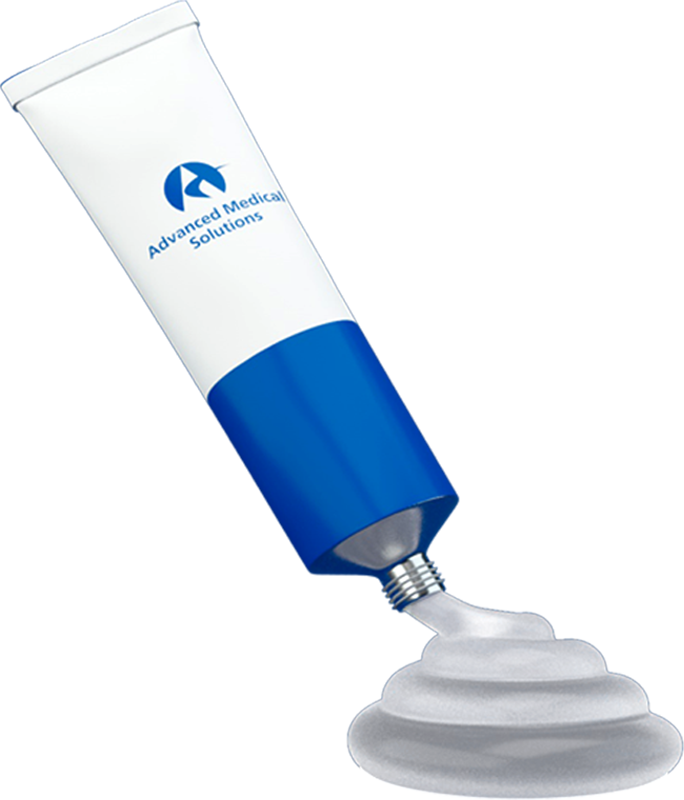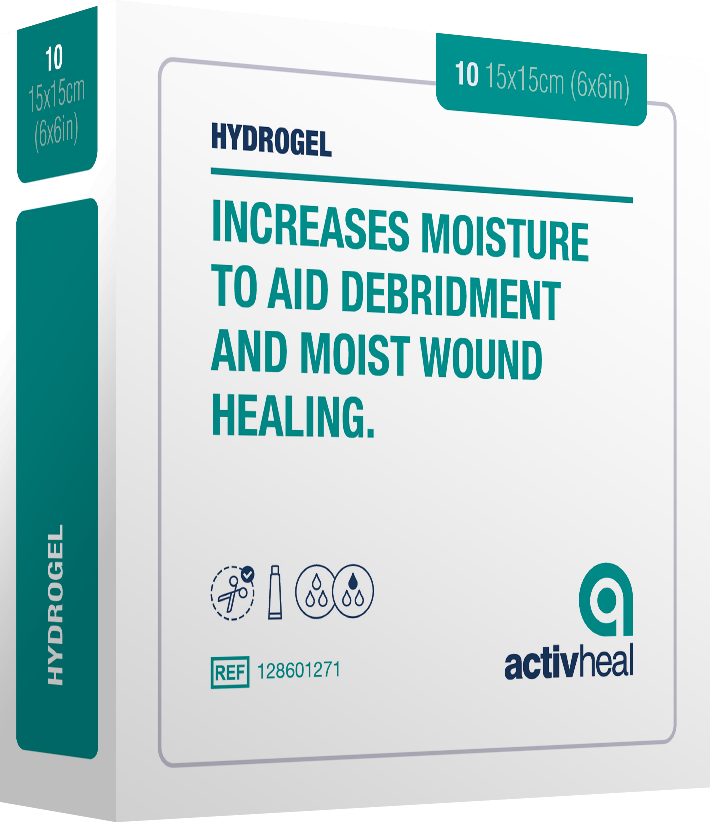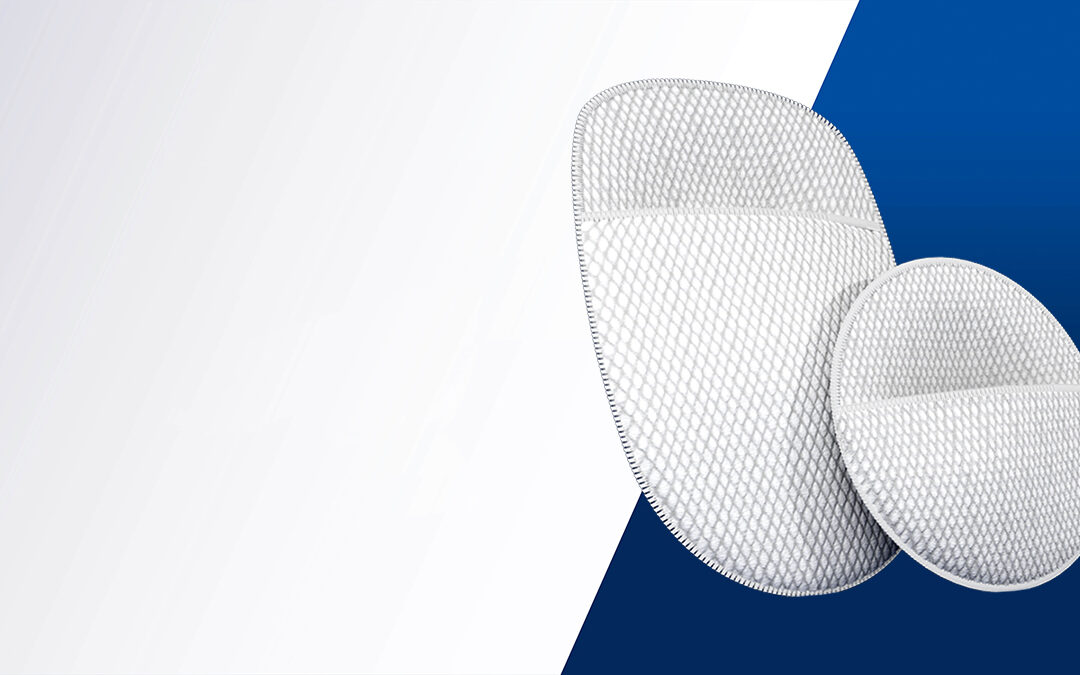
CE Marked & Available in FDA territories
Overview
Essential hydration to facilitate autolytic debridement of dry and devitalised tissue.
Our hydrogel has been specifically developed with a high water content that gently donates moisture to dry necrotic wounds to encourage healing through autolytic debridement.

Our hydrogel is supplied in an easy-to-use aseptic delivery tube.
It has the optimum viscosity and necessary cohesion properties to ensure it remains on the wound site throughout the wound treatment.1
This makes our gel effective in assisting the debridement process in dry, devitalised tissue, while donating moisture to the wound and maintaining a moist wound environment for optimal wound healing.2
Fluid donation
The AMS Hydrogel has significantly higher fluid donation capability when compared to a competitor product, to promote wound healing through autolysis.
Hydrogel
Our hydrogel is designed to encourage healing by providing a moist wound environment, thereby supporting autolytic debridement and desloughing. Due to its amorphous state, AMS Hydrogel conforms to any wound surface.
Fluid Donation
Our hydrogel has significantly higher fluid donation capability when compared to a competitor product.

Hydrogel is available both as OEM and under our ActivHeal brand. To find out more about the ActivHeal® Hydrogel range, download resources and view performance data, visit ActivHeal.com
Key Features and Benefits
Optimum gel viscosity and consistency
Formulated to remain in situ during dressing use
An essential tool for clinicians
Can be used with other advanced dressings such as wound contact layers, films etc.
Aseptic delivery
Integral tube piercing and tamper evident tube
Encourages and facilitates autolysis
Aids gentle debridement of necrotic and sloughy tissue leaving a clean and healthy wound bed and promoting growth of granulation tissue
Indications For Use
Hydrogel is indicated for the management of the following necrotic and sloughy wounds with nil to low exudate levels:
- Pressure ulcers
- Diabetic ulcers
- Leg ulcers
- Graft and donor sites
- Cavity wounds
- Abrasions
- Lacerations
- Postoperative surgical wounds

1. Young T, Williams C, Benbow M et al (1997) A study of two hydrogels used in the management of pressure sores. Proceedings of the 6th European Conferences on Advances in Wound Management, 21-24 November. Macmillian, London.
2. Dealey C. (1999) The care of wounds - A guide for Nurses 2nd Edition. Blackwell Science Oxford.
3. Pudner, R (2001) Amorphous hydrogel dressing in wound management. Journal of Community Nursing. June, Vol 15. issue 6.
◊Trademark of Smith+Nephew
